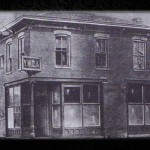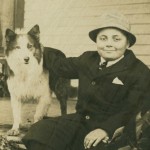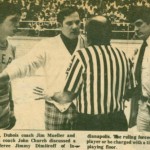It took a 6’3” sophomore from Shelbyville and a righteous university president to break down the color line in Big Ten basketball.
After a devastating 1947-48 season, and the loss of his top recruit–6’9” center Clyde Lovellette—to Kansas that summer, legendary Indiana University coach Branch McCracken was ready to jump ship for California when UCLA made the coach a tempting offer.
IU President Herman B. Wells reminded McCracken of his recently signed ten-year contract, however, and the coach began the process of rebuilding the Hoosiers. Luckily, he had Bill Garrett on his team.
Garrett’s presence on the 1948-49 team was not incidental. The player’s merits were well established—Garrett was named Indiana Mr. Basketball 1947 after having led the Shelbyville Golden Bears to the state title. But Garrett was African American, and as such, unofficially barred from Big Ten play.
Racial segregation had also marked Indiana high school basketball until 1943, when all-black schools, along with Catholic institutions, were finally included in the state tournaments. Garrett was only the state’s second black Mr. Basketball, following Johnny Wilson in 1946.
Like Wilson, who resigned himself to Anderson College (where he was ultimately named a small-college All-American), Garrett settled on Tennessee State, where he could play ball.
Acting on the suggestion of several African-American alumni, and pushing for greater integration, President Wells asked McCracken to court Garrett.
When Coach McCracken expressed apprehension that a racially-mixed Hoosier team might not get many dates, Wells countered that he would pressure any balkers through the Council of Ten, comprising all Big Ten presidents.
When McCracken relented, the other teams in the conference immediately responded by seeking to recruit the country’s top black high school players.
A natural forward, Garrett often stepped in to play center during his first season at IU, leading the Hoosiers to a respectable finish. By his senior year, the Big Ten’s first black player averaged 13 points a game—an all-time record at IU—earned All-American and All-Big Ten honors, and led the Hoosiers to a 19-3 season.
By 1952, half of the Big Ten basketball teams included black players.
Sources for this program include Jason Hiner, Mac’s Boys: Branch McCracken and the Legendary 1953 Hurryin’ Hoosiers (Bloomington, In., 2006); and John Mutka, review of Tom Graham and Rachel Graham Cody, Getting Open: The Unknown Story of Bill Garrett and the Integration of College Basketball (Bloomington, In., 2008).






















